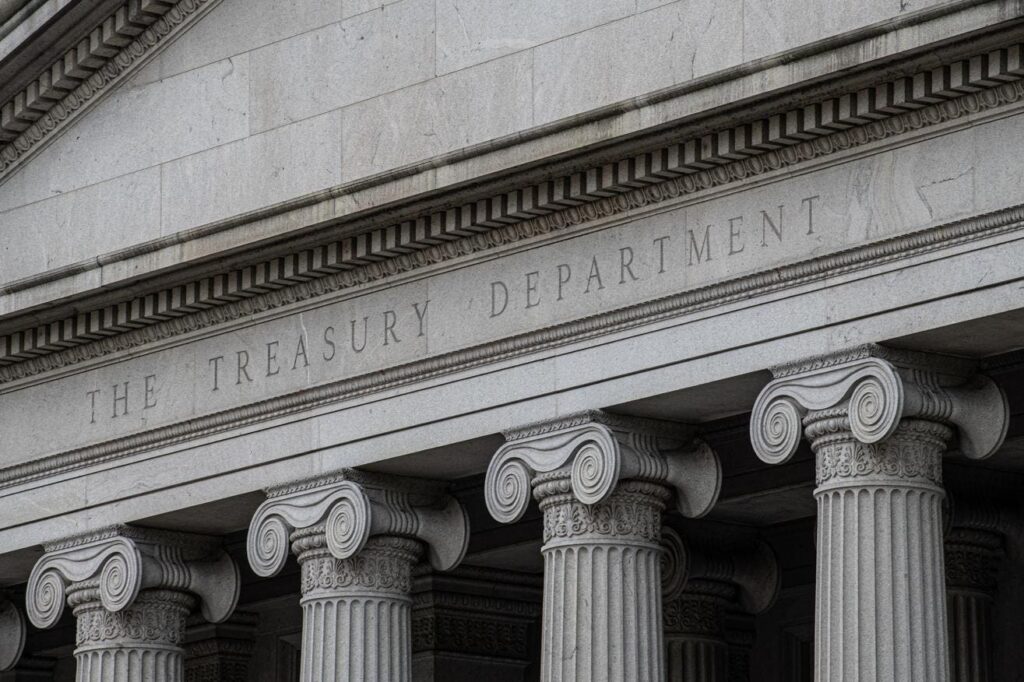The ten-year U. S. government note this week made it above 4.50% and, as economist Mohammed El-Arian notes, took the yield higher than its been for three months. This has helped to move the dollar index higher, although not all that much. The effect on interest rate sensitive stocks has been negative.
(The 30-year U. S. government bond almost climbed back to the 5%, a level last seen in January.)
The interest rate sensitive Real Estate Select Sector SPDR Fund has spent the month of May declining from its March and April peaks. The Dow Jones Utility Average is the same basic story: although it peaked in early May, the price had six straight days of downward movement before regaining a bit of strength
Yields Higher As Key Interest Rate Sensitive Sectors React
Here’s how the yield on the 10-year note looks now:
The lower red dotted line connecting the September 2024 low with the April 2025 low indicates the upward direction of yields. The upper red dotted line shows the 4.8% level achieved in January and not that far above the current 4.44% level (the chart shows basis points).
The yield chart for the 30-year U. S. Treasury bond is here:
The yield almost reached the early January peak of just below 5% as bond selling kicked back into gear. Note that the market has gone from 3.95% (the chart shows basis points) to Friday’s 4.89%, quite a move upward. A move above the 5% level would indicate more serious concern about inflation and tariffs.
The U. S. Dollar has a daily price chart that looks like this:
Investors in the dollar like to see higher U. S. government bond yields as that is believed to show confidence that inflation concerns are being addressed.
The rally in May is puny, though, compared to previous somewhat similar periods and that’s what El-Arian is noting in his comments. The dollar’s inability to rise above the 50-day moving average or to above the 200-day is clear.
The daily price chart for the Real Estate Select Sector SPDR Fund is here:
The price has moved upward from the April lows but is unable to cross above the downtrend line that connects the late November 2024 high with the early March 2025 high.
Real estate investment trusts are some of the most interest rate sensitive securities that trade. It’s two-sided: 1)lots of borrowed money is at stake and 2)many REITs are owned for their dividends. When government bond yields rise, some investors in this sector become concerned enough to find the sell button.
Here’s the daily price chart for the Dow Jones Utility Average:
The price move upward off the early April lows is impressive. Nevertheless, it remains a downtrend as long as the average remains below the red dotted line connecting the late November 2024 high with the early May 2025 high.
Utilities borrow lots of money and pay out dividends: this combination makes them as interest rate sensitive as the REITs.
More analysis and commentary at johnnavin.substack.com.
Read the full article here
